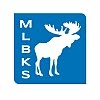Setting up recurring entries can save you both bookkeeping time and act as a reminder system. Recurring entries can be set up for cheques (payables) and receipts, and for both trust and general bank accounts.
A few examples of how recurring entries can be used:
For the general bank cheques – Pre-authorized monthly payments for car, insurance, leased equipment, rent, etc. Salaried employees that receive the same pay and have the same deductions every week, can also be set up as recurring. If money is tight, setting the reminder for a day or two before the due date gives you time to make sure the funds are on deposit.
General bank receipts – You may have a client paying off their accounts receivable balance by instalments. Setting this up as a recurring entry will remind you if the cheque did not arrive.
Trust bank cheques – Suppose you are acting for an estate or acting under a Power of Attorney. You may need to make monthly payments to a retirement or nursing home. For an estate, you may be selling the home, but, in the meantime, you still need to make the equal billing payments for heat, hydro, etc.
Trust receipts – Most often used for estates / Powers of Attorney, for investments like dividend payments or annuity payments, etc. Litigation files might involve settlement funds paid by instalments. Again, recurring entries can act as a tickler system to remind you that the payment has not arrived.
The Recurring Entries buttons are located just to the left of the OK button on cheques and receipts. To set up a recurring entry, do your receipt or cheque entry as normal, but do not click OK. Instead, click Create – then name your entry i.e. car payment, set the frequency, and who to remind – OK to save the recurring entry – then OK to post the original entry.
The next month, you will receive a reminder when you sign-in on the due date. You can process the entry from the reminder window – just be sure you place a checkmark in “Prompt for Che/Rcpt #”. Click on the entry (entries), then click Process. If the bank transaction occurred on a weekend, be sure to change the “Process Date”.
Recurring entries can also set up for random use too. For example, if you do litigation, you could set up a cheque for a Statement of Claim, payable to Minister of Finance, with the amount, explanation code, and G/L account all filled in. Open a cheque window as normal, click "Use" Recurring Entries, select the entry, enter the matter number, Print.
As always, I invite your comments and suggestions for future posting topics. Next week – Workstation Settings.
Clyde

MLBKS Ontario PCLaw Bookkeeping: A bi-weekly blog written especially for small firms and solo-lawyers practicing in Ontario, and their bookkeepers. While some topics will be of general interest, the target audience are those who use PCLaw on a regular basis. The focus will be the practical use of PCLaw, especially in relation to the Law Society of Upper Canada's Bookkeeping Guide, trust transactions, and spot audits. Your host: Clyde McDonald - Muskoka Legal Bookkeeping Services
No comments:
Post a Comment
I welcome any comments or feedback.
Do you have a question? Do you have a topic for a future article?